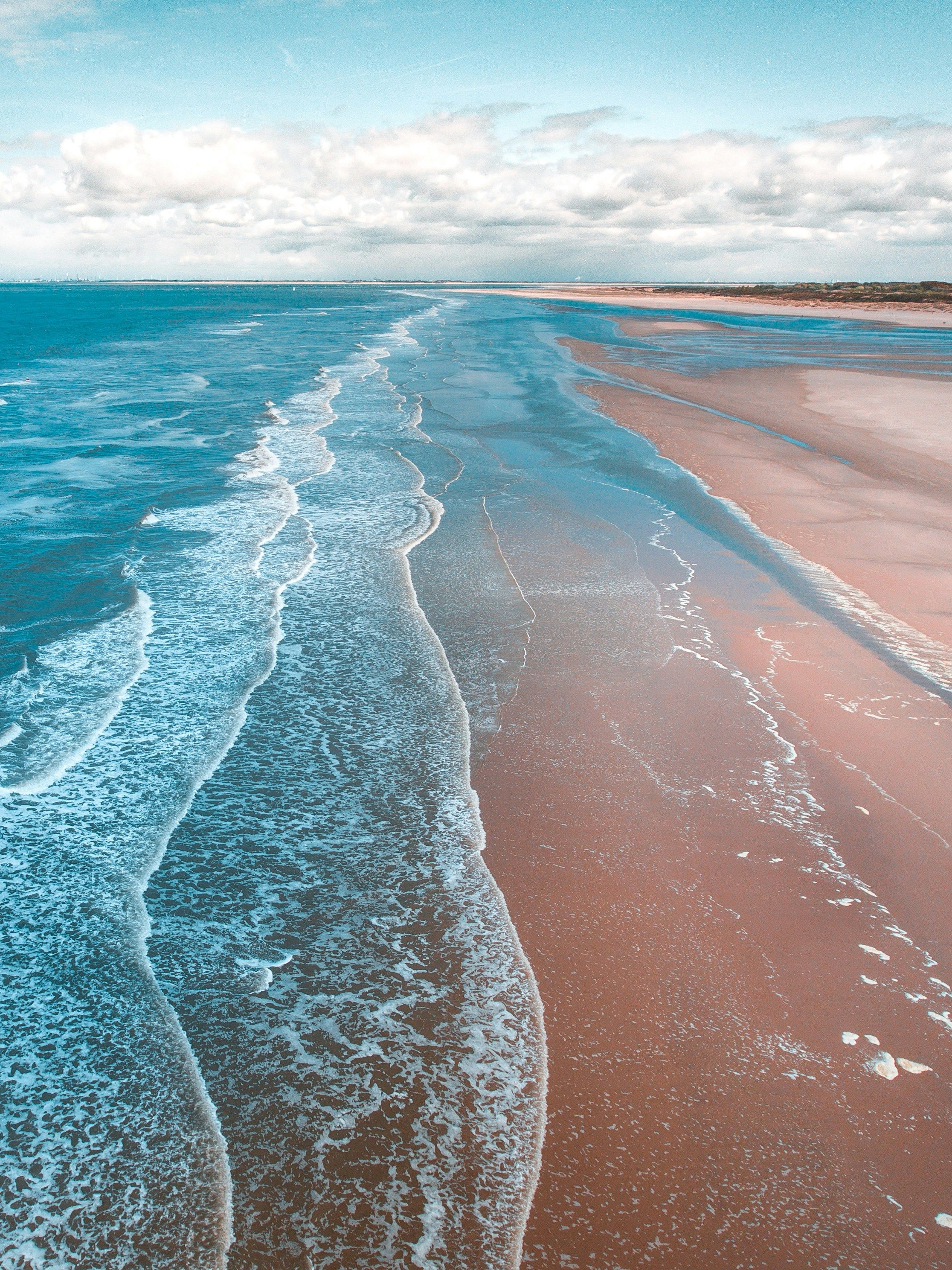UK's Most Polluted Beaches Exposed - Swimmers Face Potential Health Risks Severe Enough to Require Hazardous Material Protection Gear
Jump into the UK's 'Ugliest' Beaches: Bacteria from Sewage Makes a Splash
This week, England unveiled the Brown Flag awards—rating popular tourist spots based on water cleanliness. Unfortunately, some iconic destinations didn't make the cut due to poor summer water quality.
Beaches such as Bognor Regis, Aldwick, and Blackpool North earned a 'poor' rating from the Environment Agency for their water quality during the summer. Lancashire took the bottom spot in the league table as none of its beaches were graded 'excellent'. Conversely, Northumberland, Dorset, and Devon's beaches received 'excellent' ratings.
Surprisingly, the number of subpar beaches—those rated 'poor' due to bacteria such as E. coli from sewage and other waste—increased from 13 in 2024 to 19 in 2025. Swimmers are left lamenting, "I wish I'd worn a hazmat suit."
As Robbie Lane, a campaigner and swimmer from Holiday Park Guru, said, "We had hoped that we'd be handing out fewer Brown Flags this year—but things have gone down the pan." He urges beachgoers to research their local spots before heading out this summer.
The Brown Flag Awards 2025
Listed alphabetically by county:
- Porthluney in Cornwall
- Coastguards Beach, Erme Estuary in Devon
- Lyme Regis Church Cliff Beach in Dorset
- Southsea East in Hampshire
- Deal Castle in Kent
- Dymchurch in Kent
- Littlestone in Kent
- Blackpool North in Lancashire
- St Annes North in Lancashire
- Heacham in Norfolk
- Weston Main, Weston Super Mare Sand Bay, and Weston Super Mare Uphill Slipway in Somerset
- Dunster Beach in Somerset
- Blue Anchor West in Somerset
- Bognor Regis, Aldwick in Sussex
- Worthing Beach House in Sussex
- Tynemouth Cullercoats in Tyne and Wear
- Littlehaven Beach in Tyne and Wear
- Scarborough South Bay in North Yorkshire
- Bridlington South Beach in East Riding of Yorkshire
"Newcomers" refer to either newly designated bathing spots with a poor rating or existing bathing spots that have been downgraded. Large resorts have multiple beaches and testing points, so it may only be a specific section that's designated 'poor'.
To compile the Brown Flag awards, Holiday Park Guru used Environment Agency data based on around 7000 samples at over 400 bathing waters, calculated annually based on samples from the previous four years. They excluded rivers and lakes from the sample.
Read More
UK beach named as a fake of a stunning spot in the South of France by travel experts
Water quality readings assess intestinal enterococci and E. coli (e-coli) levels to determine whether there is 'faecal matter' in the water. The Environment Agency states that this comes from sewage, agricultural livestock, wildlife, birds, and road drainage.
Currently, 67% of England's monitored resorts score a three-star rating (excellent), while 5% score zero-stars (poor). Unfortunate for swimmers and the environment, the number of poor water quality spots is on the rise. Water quality readings are only taken from May 15 – September 30. Winter months see lower water quality due to overflowing sewage and wastewater from increased rainfall.
#### Pollution FactorsThe poor water quality in certain UK beaches is the result of several pollution factors:
- Sewage contamination: Sewage spills into bathing waters frequently, with over 24,000 spills recorded in UK bathing waters in a recent year, lasting over 179,000 hours. These discharges expose swimmers to harmful bacteria like E. coli that degrade water quality[1].
- Surface runoff from heavy rainfall: Heavy, unpredictable rainfall washes pollutants like sewage and agricultural chemicals into the sea via surface runoff. This runoff raises concentrations of harmful bacteria and nutrients in coastal waters, polluting further[2].
- Agricultural pollution: Excess nitrates, phosphates, herbicides, and pesticides from farming activities supply nutrients that cause eutrophication—excessive growth of algae that harms water ecosystems[5].
- Marine and boating pollution: Chemicals from boat antifouling paints (which contain heavy metals and biocides toxic to marine life), sewage from onboard toilets, oils, fuels, plastics from vessel maintenance impact water quality in harbors and coastal waters, harming aquatic organisms and ecosystems[5].
- Concerned citizens may find it disconcerting to learn that health-and-wellness activities, such as swimming, could potentially expose them to harmful bacteria like E. coli due to climate-change related increased rainfall and the subsequent surface runoff, which is a significant pollution factor contributing to the poor water quality in various UK beaches.
- The rise in the number of subpar beaches, those rated 'poor' due to contaminants like sewage and other waste, in the Brown Flag Awards 2025 highlights the pressing environmental issue of climate-change and its influence on the health of our waterways, particularly as it affects traditional travel destinations.
- While science and environmental-science have made significant strides in understanding the complex web of factors contributing to the pollution of beaches in the UK, it is also crucial for information regarding local water quality to be made readily available for tourism and health purposes, enabling citizens and travelers to make informed decisions about their health and well-being as they navigate their choices for health-and-wellness activities in the summer months.







